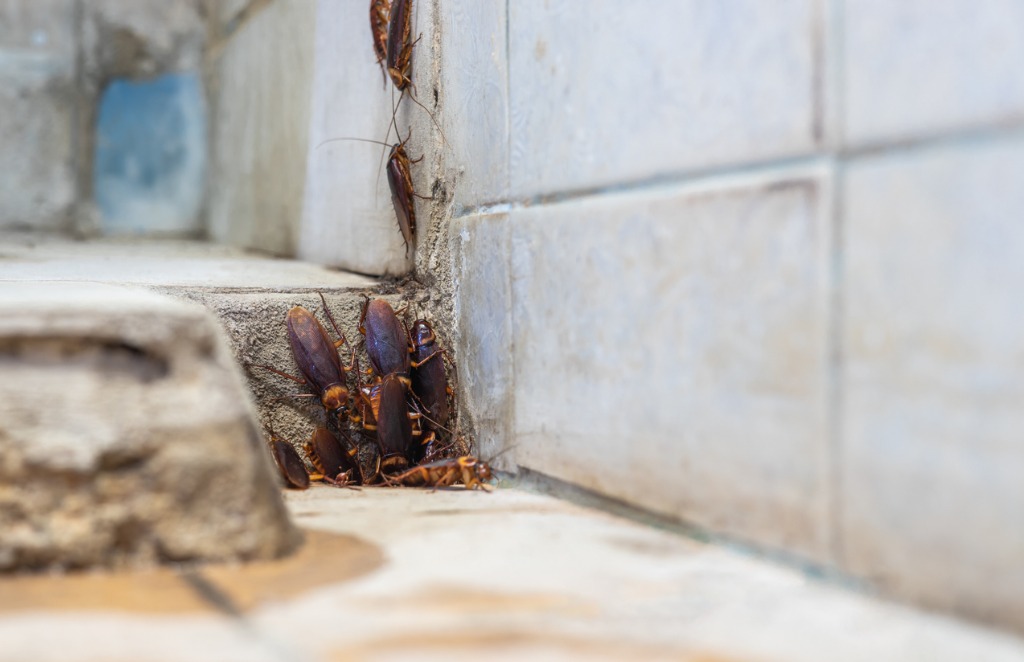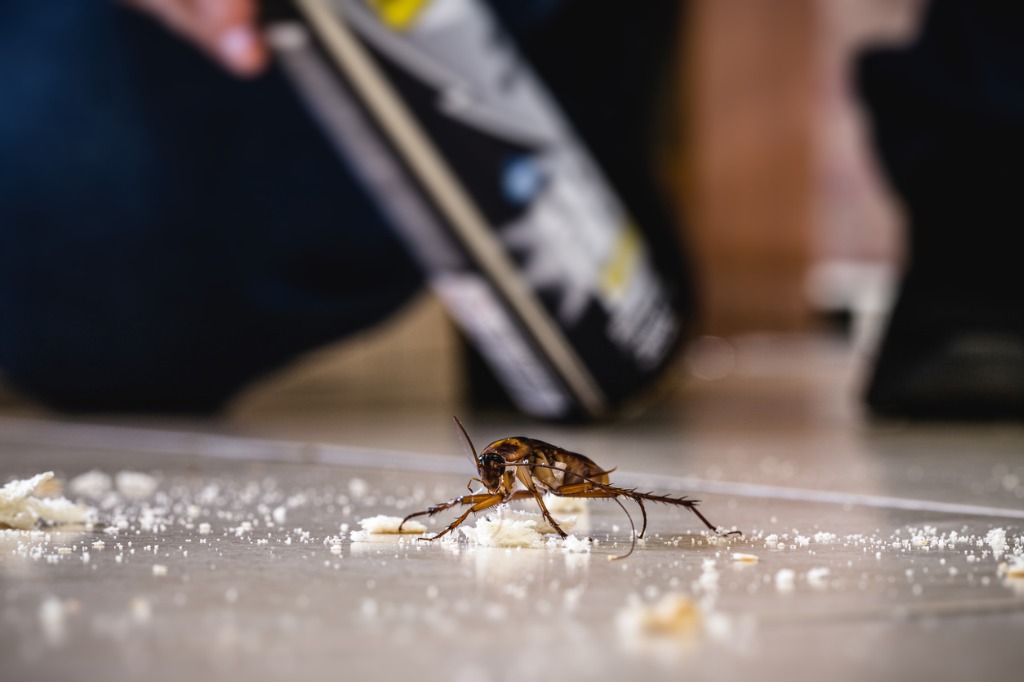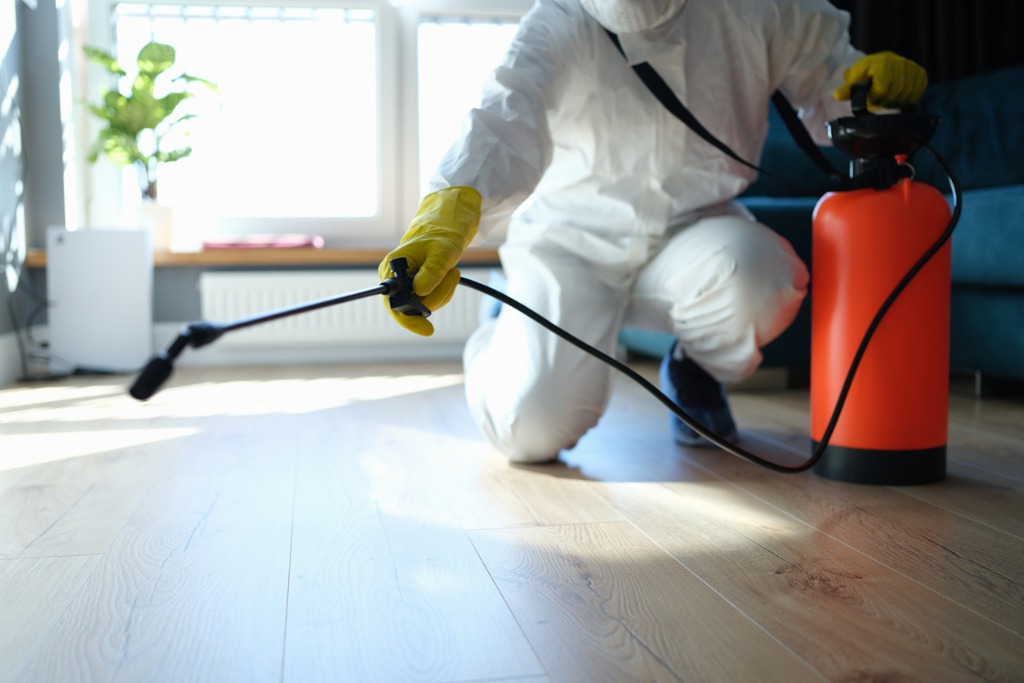Are you tired of sharing your home with unwanted, six-legged visitors? Look no further than this comprehensive review of cockroach control methods. From the tried-and-true traps to the cutting-edge sprays, we’ve got you covered in your battle against these resilient pests. Say goodbye to sleepless nights and unsightly infestations as we delve into the world of pest control and uncover the most effective strategies for banishing cockroaches from your space. Whether you’re a homeowner or a renter, this article is a must-read for anyone looking to reclaim their territory from these creepy crawlers.
Key takeaways
- Cockroaches have resilient life cycles, and understanding their biology and behavior is crucial for effective control.
- Environmental factors like food availability and hiding places contribute to cockroach infestations.
- Mechanical control methods, such as traps, are non-toxic and useful for monitoring and capturing cockroaches.
- Physical barriers, like sealing cracks and installing door sweeps, help prevent cockroach entry.
- Chemical control methods, including sprays and baits, can be effective but require proper application and safety precautions.
- Integrated Pest Management (IPM) combines various strategies for sustainable and long-term cockroach control.
Cockroach Biology and Behavior
Life Cycles of Cockroaches
Cockroaches are not only resilient but also highly adaptable insects. Understanding their life cycles is crucial in combating infestations effectively. Most commonly encountered species, like the German cockroach, undergo three developmental stages: egg, nymph, and adult.
The egg stage is the starting point, where female cockroaches lay egg cases, known as oothecae, in hidden and sheltered locations. Each ootheca may contain dozens of eggs, depending on the species. After a period of incubation, nymphs hatch from these eggs. Nymphs resemble smaller, wingless versions of adult cockroaches and go through several molts before reaching adulthood. The time it takes for nymphs to mature into adults varies among species.
Habitats and Behavior Patterns

Cockroaches are renowned for their adaptability, which allows them to thrive in diverse environments. They are often found in warm, dark, and humid places, such as kitchens, bathrooms, basements, and sewers. These pests are nocturnal, preferring to stay hidden during the day and emerging at night to search for food and water.
Cockroaches are scavengers, and their diet includes a wide range of organic materials, from crumbs and food scraps to paper and even glue. Their omnivorous nature makes them particularly difficult to control because they can find sustenance in unexpected places.
Environmental Factors Leading to Infestations
Several environmental factors contribute to cockroach infestations. First and foremost is the availability of food and water. Cockroaches are drawn to areas with readily accessible food sources and water, making kitchens and poorly maintained areas prime targets. Proper food storage and sanitation are essential to deter these pests.
Additionally, clutter and hiding places provide ideal habitats for cockroaches. Cardboard boxes, stacks of paper, and debris create sheltered spaces where they can hide and reproduce.
Mechanical Control Methods

1. Types of Traps (Sticky, Bait, etc.)
Mechanical control methods, such as traps, offer a non-toxic and targeted approach to combat cockroach infestations. There are various types of traps available, each designed with specific features to lure and capture cockroaches.
- Sticky Traps: These traps are coated with a strong adhesive, and they are excellent for monitoring and trapping cockroaches. The traps can be placed strategically in areas where cockroaches are suspected, and they work by capturing the insects as they walk over the adhesive surface. Sticky traps are often used in conjunction with baits to enhance their effectiveness.
- Bait Traps: Bait traps combine attractive bait with a trapping mechanism. The bait lures cockroaches into the trap, where they are then caught and unable to escape. These traps are particularly effective because they not only capture the roaches but also help identify the severity of the infestation based on the number of roaches attracted.
- Roach Motels: Roach motels are enclosed traps with multiple entry points and a sticky interior. They mimic the environment that cockroaches prefer, providing them with an enticing shelter. Once inside, cockroaches become trapped on the sticky surface, unable to leave.
2. Effectiveness and Limitations
The effectiveness of mechanical traps in cockroach control depends on several factors, including the type of trap used, placement, and the species of cockroaches infesting the area.
- Effectiveness: Sticky traps, bait traps, and roach motels are effective for monitoring and capturing cockroaches, especially when strategically placed in areas of high cockroach activity. They are non-toxic and safe for use in homes with children and pets, making them a popular choice for indoor infestations. Additionally, these traps are useful tools for tracking the success of your control efforts.
- Limitations: Mechanical traps may not completely eliminate cockroach infestations on their own. They are most effective when used in conjunction with other control methods, such as baits and sanitation. Additionally, they may only capture a portion of the population, and it’s essential to keep an eye on trap activity to assess the extent of the infestation. Some cockroach species are more cautious and may avoid traps, so a combination of traps and other control measures is often necessary for comprehensive pest management.
Physical Barriers
1. Sealing Cracks and Crevices
- This involves identifying and sealing any gaps, cracks, or openings in the walls, floors, ceilings, and foundation of a building. These openings can serve as entry points for pests such as rodents, insects, and even drafts.
- Materials used for sealing can include caulk, weatherstripping, foam insulation, and even physical barriers like wire mesh for larger openings.
- Properly sealing these gaps not only helps in pest control but also contributes to energy efficiency by preventing heat or cool air loss.
2. Installing Door Sweeps and Window Screens
- Door sweeps are weatherstrips or seals that are attached to the bottom of exterior doors. They help create a tight seal when the door is closed, preventing pests from crawling or flying in underneath.
- Window screens are mesh-like materials that cover windows and other openings to allow for ventilation while keeping insects out.
- Screens are typically made from materials like aluminum or fiberglass and come in different mesh sizes to block different types of pests.
Chemical Control Methods

1. Types of Cockroach Sprays (Contact, Residual, etc.)
Cockroach control often relies on the use of specialized sprays. Contact sprays are designed to kill roaches upon direct contact, making them useful for immediate action. Residual sprays, on the other hand, leave a long-lasting invisible residue on surfaces, providing ongoing protection against roaches. They are typically applied to areas where roaches are likely to travel or hide, such as cracks and crevices.
2. Application Techniques
The effectiveness and safety of cockroach sprays depend on proper application techniques. It’s essential to target areas where roaches are active or likely to hide, such as kitchens and bathrooms. Ensure even coverage of the pesticide on surfaces, and pay special attention to entry points and harborage areas. Take precautions to avoid contaminating food preparation surfaces, utensils, and dishes. Proper ventilation during and after application is also important to minimize exposure to the pesticide.
3. Safety Considerations
When using cockroach sprays, safety is paramount. Follow the manufacturer’s instructions carefully, including recommended dilution ratios and safety precautions. Wear appropriate personal protective equipment (PPE), such as gloves and a mask, to prevent skin contact and inhalation of fumes. Keep children and pets away from treated areas until it’s safe. Additionally, consider using less toxic alternatives or consulting a pest control professional, especially for severe infestations or when dealing with sensitive environments, such as hospitals or schools, where extra care must be taken to ensure the safety of occupants.
Baiting
1. How Baits Work
Baits are a strategic and effective method for pest control. They work by using attractive substances mixed with a pesticide to lure pests to ingest or come into contact with the poison. When pests consume the bait or carry it back to their nests, it can lead to the death of the entire colony or population. Baits are specifically designed to target the feeding habits of the pest species, making them an efficient and targeted approach. They can be used for various pests, including ants, cockroaches, rodents, and termites.
2. Types of Baits (Gel, Granular, etc.)
There are several types of baits available for pest control, each designed to target specific pest species and their behaviors:
- Gel Baits: Gel baits are viscous substances that come in syringe-like applicators. They are commonly used for controlling cockroaches and ants. Gel baits can be applied in small, precise amounts in cracks, crevices, and other hiding spots.
- Granular Baits: Granular baits consist of small particles and are often used for outdoor pest control. They are suitable for targeting ants, crickets, and other pests that forage for food outside.
- Bait Stations: Bait stations are protective containers that hold solid or liquid bait. They are commonly used for controlling rodents. Bait stations provide a secure and tamper-resistant way to deliver bait.
3. Advantages and Disadvantages
Baits offer several advantages in pest control. They are highly targeted, reducing the risk of non-target organisms being exposed to pesticides. Baits are often safer to use in sensitive areas, such as homes, as they minimize pesticide exposure. Additionally, baiting can lead to colony elimination, providing long-term control. However, there are some disadvantages to consider. Baits may take time to work, as pests must find and consume them. They may also require reapplication if the bait is consumed or becomes ineffective. In some cases, pests may develop resistance to certain bait formulations, necessitating the use of alternative baits or control methods. Overall, the choice of bait and its success in pest control depends on factors like the target pest species, environmental conditions, and proper placement.
Dusts and Powders
1. Utilizing Diatomaceous Earth
Diatomaceous earth (DE) is a naturally occurring, fine powder made from the fossilized remains of diatoms, which are tiny aquatic organisms. DE is commonly used in pest control due to its abrasive and desiccant properties. When cockroaches come into contact with DE, it clings to their exoskeleton, absorbing the waxy protective layer on their bodies. This causes the cockroach to dehydrate and ultimately leads to its death. DE is considered a low-toxicity method for controlling cockroaches and is generally safe for humans and pets. It can be applied in cracks, crevices, and other hiding spots where cockroaches are known to frequent. However, it’s essential to use food-grade diatomaceous earth when app
2. Other Dusts for Cockroach Control
In addition to diatomaceous earth, there are other dusts and powders that can be effective for cockroach control:
- Boric Acid: Boric acid is a low-toxicity powder that works as both a stomach poison and a desiccant. When cockroaches ingest or come into contact with boric acid, it damages their digestive system and dehydrates them. Boric acid can be applied in thin layers in areas where cockroaches travel or hide.
- Insecticidal Dusts: Some insecticidal dusts, such as those containing pyrethroids or other active ingredients, can be used for cockroach control. These dusts have a toxic effect on cockroaches when they come into contact with them. However, they may be more toxic to humans and pets compared to diatomaceous earth or boric acid, so caution should be exercised when using them, and they should be applied according to label instructions.
Biological Control Methods
1. Beneficial Insects
Beneficial insects are natural predators, parasites, or pollinators that can be introduced or encouraged in an ecosystem to control pest populations. They play a crucial role in maintaining ecological balance and can be an effective and sustainable method for pest control. For example, ladybugs (lady beetles) and lacewings are known predators of aphids and other soft-bodied pests. These insects can be released into agricultural fields or gardens to help reduce pest numbers. Additionally, honeybees and other pollinators are essential for crop pollination, contributing to higher yields. To implement biological control using beneficial insects, it’s essential to understand the pest’s life cycle, the behavior of the beneficial insect, and the environmental conditions that favor their establishment.
2. Nematodes
Nematodes are microscopic roundworms that can be used for biological control of soil-dwelling pests, such as grubs, root-feeding nematodes, and certain insect larvae. They are applied to the soil, where they infect and kill pests. For example, Steinernema and Heterorhabditis species of nematodes are commonly used for this purpose. These nematodes carry symbiotic bacteria that are lethal to insects. Once the nematodes locate a suitable host, they enter the pest’s body and release the bacteria, causing the pest’s death within a few days. Nematodes are often used in agriculture, turf management, and horticulture to control a variety of soil-dwelling pests while minimizing the use of chemical pesticides.
Microbial Control
1. Introduction to Microbial Agents
Microbial control is a pest management strategy that utilizes microorganisms to control pest populations. These microorganisms can include bacteria, fungi, viruses, and protozoa. In the context of pest control, microbial agents are often used to target specific pests while minimizing harm to non-target organisms and the environment. Microbial agents typically work by infecting, parasitizing, or otherwise disrupting the biology or behavior of the pest species. They can be used in various settings, including agriculture, forestry, and urban pest management.
2. Application and Effectiveness
The application of microbial agents in pest control can vary depending on the target pest and the chosen microorganism. Some common examples of microbial agents and their effectiveness include:
- Bacillus thuringiensis (Bt): Bt is a bacterium used to control insect pests, particularly caterpillars and larvae. It produces toxins that are lethal to specific insect species. Bt formulations are sprayed on plants, and when the pest larvae ingest the toxin, it disrupts their digestive system, leading to death. Bt is effective against a range of pests while being safe for humans, animals, and beneficial insects.
- Entomopathogenic Fungi: Certain fungi, such as Beauveria bassiana and Metarhizium anisopliae, are used to control a wide range of insect pests. These fungi infect the pest’s body, eventually killing it. They are applied as spore formulations to the target pest’s habitat, where they can infect pests through contact. These fungal agents are particularly effective against soil-dwelling insects and some above-ground pests.
- Virus-Based Biopesticides: Viruses that infect specific insect pests can be used as microbial agents. These viruses are typically applied as biopesticides. They infect and kill their host insect, often causing characteristic symptoms such as altered behavior or color changes.
Integrated Pest Management (IPM)
Principles of IPM
Integrated Pest Management (IPM) is a systematic and sustainable approach to pest control. It is guided by several key principles. Firstly, IPM emphasizes monitoring and identification to understand pest populations and behaviors. Secondly, it prioritizes prevention through proactive measures like sanitation and exclusion to reduce pest-friendly environments. Thirdly, it establishes action thresholds to determine when intervention is necessary. Fourthly, it combines various control methods, including biological control, physical barriers, and targeted pesticide use. Fifthly, IPM promotes the use of reduced-risk pesticides as a last resort, minimizing harm to non-target organisms. Lastly, it includes ongoing evaluation to fine-tune strategies for long-term pest control.
Implementing IPM for Cockroach Control
When applying IPM principles to cockroach control, a multi-pronged approach is essential. Begin with thorough monitoring and identification of cockroach species and infestation levels. Sanitation practices play a vital role in reducing cockroach attractions by eliminating food and water sources. Exclusion measures, such as sealing cracks and entry points, help prevent cockroach access. Biological control methods can involve introducing natural predators or parasitoids. When necessary, targeted and low-toxicity pesticide application should be done in areas frequented by cockroaches. Regular monitoring and assessment ensure the effectiveness of these measures.
Case Studies of Successful IPM Programs
Numerous case studies showcase the success of IPM programs across diverse settings. For instance, the New York City Housing Authority (NYCHA) implemented IPM to tackle cockroach infestations in public housing. Their approach, which combined sanitation, sealing of entry points, and targeted pesticide use, led to a significant decrease in cockroach complaints and pesticide applications. Similarly, the University of California, Davis adopted IPM strategies within campus buildings, reducing pest complaints and enhancing overall hygiene. The Florida Department of Agriculture and Consumer Services initiated the “Adopt-A-Palmetto Bug” program, engaging residents in IPM practices for cockroach control, resulting in reduced pest populations and diminished pesticide use. These case studies underscore the effectiveness and sustainability of IPM in achieving pest control goals while minimizing environmental and health risks.
Non-chemical and DIY Cockroach Control
Non-chemical and DIY cockroach control methods involve practical steps to prevent and manage infestations without using harmful pesticides. These measures include maintaining cleanliness, sealing entry points, using natural remedies like diatomaceous earth and essential oils, employing traps for monitoring, and creating a holistic prevention plan. By combining these non-chemical and eco-friendly strategies, you can effectively manage cockroach issues while minimizing risks to your health and the environment.
Challenges and Emerging Trends
Resistant Cockroach Populations
Cockroach control can often be tackled effectively with non-chemical and DIY methods. Home remedies and preventive measures are crucial components of this approach. Start by maintaining high levels of cleanliness, particularly in kitchens and bathrooms, as cockroaches are attracted to food and moisture. Eliminate food and water sources by sealing containers tightly and fixing leaks. Regularly clean behind and under appliances, as these are common hiding spots. Remove clutter, as it provides hiding places for roaches. Additionally, employ preventive measures such as sealing cracks and crevices, using door sweeps and window screens, and keeping doors and windows well-maintained to prevent roach entry.
Regulatory Changes and Restrictions
Eco-friendly and natural alternatives for cockroach control are safer for humans, pets, and the environment. Diatomaceous earth, a natural powder, can be applied in areas where cockroaches travel. It works by damaging their exoskeleton and dehydrating them. Sticky traps are non-toxic and can help monitor and capture roaches. Essential oils like peppermint, cedar, or neem oil can act as repellents. Mix a few drops with water and spray in cockroach-prone areas. You can also create a cleaning solution with equal parts vinegar and water, which not only cleans but also deters roaches due to its odor. Boric acid, a low-toxicity powder, can be used sparingly in areas inaccessible to children and pets.
Advancements in Cockroach Control Technology
To create a DIY cockroach control plan, follow these steps:
- Assessment: Identify areas of concern, including cockroach hiding spots and entry points.
- Clean and Sanitize: Thoroughly clean and sanitize your home, paying special attention to kitchens, bathrooms, and areas with water sources.
- Sealing: Seal cracks, crevices, and entry points to prevent roach access.
- Home Remedies: Implement home remedies like diatomaceous earth, essential oils, or vinegar-based sprays.
- Traps: Use sticky traps to monitor and capture roaches.
- Preventive Measures: Maintain cleanliness, repair leaks, and eliminate clutter to discourage roaches.
- Regular Monitoring: Continuously monitor for roach activity and adjust your plan as needed.
- Professional Help: If the infestation persists or worsens, consider consulting a pest control professional for eco-friendly and non-chemical options.
Conclusion
The battle against cockroaches can be effectively fought using a combination of traps and sprays. Traps are a valuable tool for monitoring and capturing pests, while sprays provide a quick and efficient method for killing them on contact. By utilizing both methods, homeowners can ensure that their homes remain free from these resilient insects. However, it is important to remember that prevention is key in cockroach control, so implementing proper sanitation practices and sealing off entry points should also be prioritized. With the right approach and persistence, it is possible to keep cockroaches at bay and maintain a pest-free environment for you and your family. Take action today to implement these strategies and reclaim your home from these unwanted intruders!
FAQs
What are the most common signs of a cockroach infestation?
Common signs of a cockroach infestation include the presence of live or dead roaches, feces that resemble small, dark pellets, a musty odor, and small, brown egg cases (oothecae) in hidden areas. Additionally, you may notice cockroach droppings or smear marks along walls and surfaces they frequent.
Are there any natural or DIY methods for controlling cockroaches?
Yes, several natural and DIY methods can help control cockroaches. These include keeping a clean and dry environment, sealing cracks and crevices, using boric acid or diatomaceous earth, and employing homemade baits with sugar and baking soda. However, the effectiveness of these methods may vary, and professional pest control may be necessary for severe infestations.
What is the most effective cockroach control method?
The most effective cockroach control method often depends on the severity of the infestation. For minor infestations, DIY methods or commercially available baits and traps can be effective. However, for larger or persistent infestations, it’s usually best to consult a professional pest control service, as they can assess the situation and employ appropriate measures, such as chemical treatments or integrated pest management (IPM) strategies.
Are cockroach sprays safe for indoor use, especially in homes with pets and children?
Most commercially available cockroach sprays are formulated to be safe when used according to the instructions on the label. However, it’s essential to exercise caution, especially in homes with pets and children. Keep them away from the treated area until it’s safe to re-enter, and store the products out of their reach. Alternatively, consider non-chemical methods or consult with a pest control professional who can apply treatments safely.
How can I prevent future cockroach infestations after control measures have been taken?
Preventing future cockroach infestations involves maintaining good hygiene and implementing preventive measures. This includes keeping your home clean and dry, sealing entry points, fixing plumbing leaks promptly, storing food in airtight containers, and regularly inspecting and cleaning areas prone to cockroach activity. Additionally, routine pest control inspections and treatments can help ensure long-term prevention.

